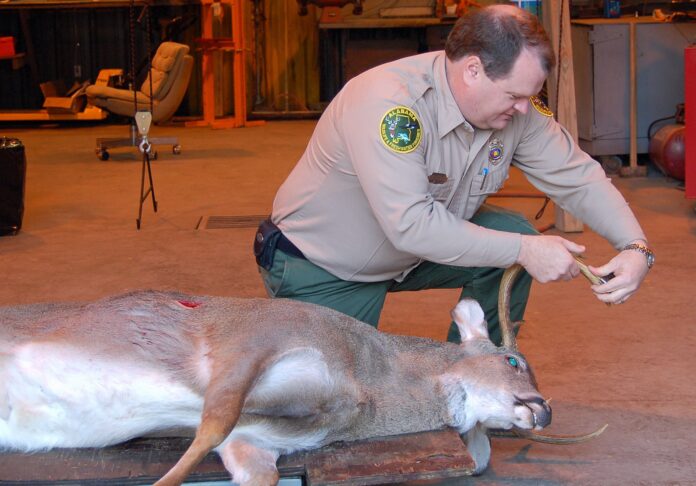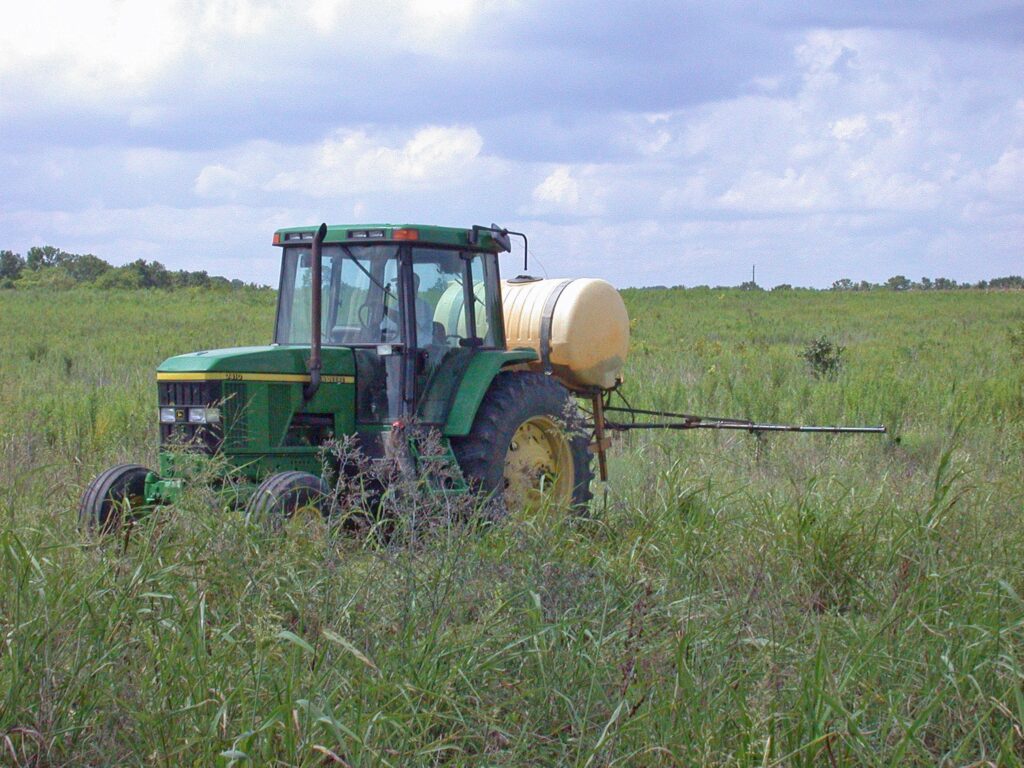
When it gets hot in late summer, most hunters in Alabama start dreaming about the upcoming seasons Chris Cook, Deer Program Coordinator with the Alabama Department of Conservation and Natural Resources’ (ADCNR) Wildlife and Freshwater Fisheries (WFF) Division, says those who want to increase their odds of successful hunting can start preparations right away, and WFF biologists are available to help.
“What most folks don’t realize is they can get in touch with our biologists in our Technical Assistance Unit to develop plans for collecting data and other things that are important for managing the deer herd,” Cook said. “They can schedule site visits and answer questions about deer management and what they might do for their specific property, data collection, habitat-wise or deer harvest strategies.
“We have a Technical Assistance biologist in each district now that is a free service. We’ve had our Deer Management Assistance Program (DMAP) since the mid-1980s, but you don’t have to be enrolled in DMAP to make use of our biologists. Just get in touch with your district office to make an appointment. They can definitely give you some advice on what to do to get ready and what you can do to improve things down the road. They can help you determine what is realistic for your property, and each situation is a little different. They look at timber stands and density to see if sunlight is getting to the ground for browse production. Leased lands may have restrictions on things like prescribed fire, so they have to look for different ways to improve the habitat.”
Visit www.outdooralabama.com/wildlife-section for the counties in each district and corresponding contact information.
“Most folks this time of year that are planning to do plantings in the fall for the wildlife are getting ready with weed control to prepare their food plots,” Cook said. “If they have perennial clover plots, most of those are struggling right now because of the heat. Heat is not a friend of clover, but they will bounce back when it cools off.”
Cook said hopefully most landowners and lease holders have pulled soil samples to get tested and know what to do to reach a proper pH level of around 6.5 with the recommended application of lime. If you’re a little late, he said to go ahead and get that done.
“If you apply lime now, it’s not going to have much of an effect on what you’re going to plant for this season,” he said. “But it’s never a bad time to get that done. That is something that needs to be done periodically, every couple of years or every three years, to get that preferred pH range.”
Next on the checklist for Cook is to inspect your ladder stands, shooting stands and houses to ensure they are safe and in good working condition.
“You can also work on getting the best access into those stands figured out,” he said. “You want to make it as easy as possible to slip in and out of those stands with the least amount of disturbance.
“And it’s a good time to do some road maintenance to make sure you can get to those stands.”

Cook said the sweat equity continues by checking your hunting property for mast production, which can dictate tactics when hunting season opens.
“It may be hot, but you can start scouting the acorn crops,” he said. “It can be difficult with leaves, but with binoculars, you can figure out what it’s going to be like and find trees that look like they will have good acorn production.
“From what I’ve seen in our area, it looks like there’s going to be a lot of white oak acorns. That’s always good for deer. If acorns are really abundant, that’s not too good for hunters because it spreads the deer out. If it turns out that only certain trees are producing acorns, that can be great for hunting.”
Many hunters may not be thinking much about their trail cameras right now, but Cook said that would be a mistake.
“I like running cameras this time of year to see what the deer herd looks like. They can check for the bucks maybe they passed on last year or see some new deer showing up. Getting pictures of deer that pique your interest gets you motivated to do these other things to get ready for deer season.”
Many hunters may make take a break from preparing for deer season by a doing some dove hunting in September. Cook says if you’re finished with your mowing and weed control, it’s fine to take a break in September.
“I rarely recommend planting in the fall before the first of October as it’s typically hot and dry through September into early October,” he said.
Cook said probably the single most important aspect of deer management is collecting data from the animals that are harvested.
“There are countless incidences where folks will come by the office with jawbones of bucks they killed the previous year and want me to tell them the ages,” he said. “The hunters typically think the deer are younger than they are. I tell them the deer was 5 or 6 years old, and they say the antlers were ‘only this size.’ A lot of people are good about passing bucks, but they don’t realize they’re passing bucks they should be shooting. Those are deer that aren’t where they should be and will never get there. They also may be shooting younger deer that are off to a great start, thinking they are older.
“Collecting body weight, lactation status of does, antler measurements and ages will give an idea of the condition of the deer. If you don’t know what you have, you may just be spinning your wheels.”
Earlier this year, a roadkill deer in Holmes County, Florida, near the Alabama line, tested positive for chronic wasting disease (CWD). In response, ADCNR will increase CWD sampling surveillance efforts in southeast Alabama as outlined in Alabama’s CWD Surveillance and Response Plan.
WFF will deploy additional self-service, drop-off CWD sampling freezer locations throughout southeast Alabama. Updated information about CWD sampling and a map of self-service, drop-off CWD sampling locations statewide for the 2023-24 season will be available soon at www.outdooralabama.com.
“In the rest of the state we’ve been doing surveillance and sampling for CWD for quite a while,” Cook said. “We will continue to do increased surveillance in our CWD Management Zone in Lauderdale and Colbert counties as well as the adjoining counties of Limestone and Lawrence. That’s the approach we will take in Geneva and Houston counties, which are closest to where the positive deer was in Holmes County.
“We’ll focus on getting as many samples as we can. That’s what Florida is doing right now. They’ve sampled quite a few additional deer and haven’t found any other positives. We’re asking hunters to help us with sample collections. We will have more freezers in place where they can drop off the deer heads for sampling. We depend on hunters for a lot of things, including the surveillance. If we detect it early, it gives us more options.”




















